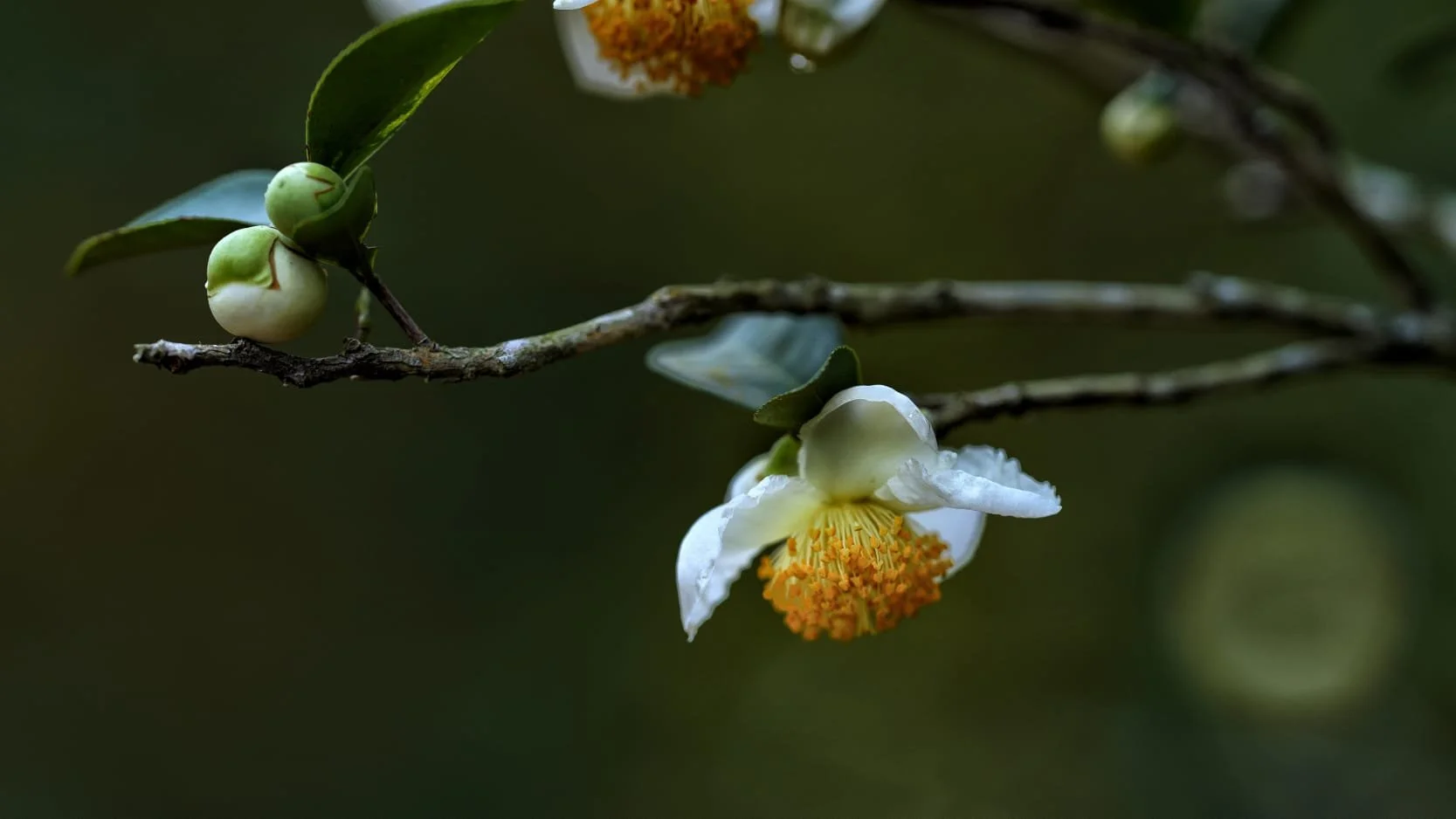WE ARE
TEA GROWERS
Tea embodies the nature it grows in, expressing the complexity of the terroir. Our 30 acre tea garden high in the mountains of the famous tea region of Wuyi Mountain, Fujian Province, China where the air is pure, the mineral-rich water flows, and the soil is fertile. We focus on growing resilient tea by building a regenerative ecosystem translates into a more robust tea. We take great care in nurturing the natural environment in which the tea grows so our tea is 100% natural, healthy and free from chemicals.
MOUNTAIN WATER
Cascading down the tea valley is a mountain stream rich in minerals from the rocks and the nutrients from the tree roots. This pure water nourishes the tea trees. We preserved the ancient forest surrounding the tea garden which serves as a water reservoir, the trees soak up the water in the wet season and release the water in the dry season modulating the soil moisture content and ensuring the tea trees are always hydrated. The natural taste of the tea comes from the water and mountains that it grows in. The water has minerals and nutrients absorbed by the tea trees, enriching the flavor of the leaves.
FLOWERS + SEEDS
Tea trees are monoecious meaning the camellia flowers are both male and female, and outcrossing which means that the probability of successful pollination of camellia flowers on the same tea tree or the same variety of tea tree is very low. Pollination success rate greatly improves between different varieties of tea trees, we have 4 different varieties in our garden. The trees blossom in the spring attracting bees, butterflies, and birds that feed on the sweet nectar of the tea flowers, pollinating the flowers that produce the tea seeds.
Tea seeds are rich in polyphenols, vitamins + minerals, omega-3 fatty acids, antioxidant compounds, and catechins, a class of flavonoids with anti-inflammatory properties. After picking the young leaves, we collect the mature tea seeds and return them to the soil to nourish the tea trees as natural fertilizer, with a chemical composition that is very suitable for tea trees.
BEES
When the camellia flowers bloom, the mountains is abuzz with bees flying from flower to flower, pollinating the trees in the process. Bees are not only an indispensable part of the ecological chain, but also an important indicator of the health of the tea garden's ecology. They are hyper-sensitive to chemicals and the populations suffer in the presence of pesticides and herbicides. Keeping our mountain chemical-free promotes the flourishing bee populations which return the favor by pollinating the flowers that in turn produce the seeds that nourish the trees – a natural cycle that produces delicious tea.
EXPRESSION OF TERROIR
Our tea expresses the terroir of the tea mountain: the fertility of the soil, the climate, the mineral-rich mountain water, the flora & fauna and everything that makes up the complexity of natural healthy ecosystem.
-
The criteria is for a high elevation where the climate is cooler, rains more, and the humidity is higher. The cooler climate attracts less insects therefore the tea tress do not need to produce as much caffeine to protect against the pests. The caffeine is bitter so reducing the caffeine results in a sweeter tea.
The valley channels the wind pulling the morning fog up through the garden nourishing the tea leaves.
-
We tested the pH content of the soil to be within a suitable range. The soil in the tea garden is red sandstone, the rich mineral nutrients give the soil its’ characteristic red color. The soil is loose and permeable which has a water saturation level that can store water for the roots of the tea trees but allow drainage of excess water preventing root rot.
The clay in the soil provides insulation, keeping the roots warm in winter, and adapts to the various climates in all seasons. The soil ecosystem operates throughout the seasons.
-
The shape of the valley was an important criteria for site selection. We studied the steepness of the slope, water drainage patterns, exposure to sunlight and shade.
Steepness of the slope should be enough to allow water drainage as tea trees do not need so much water to thrive, however too much steepness can lead to soil erosion and root exposure.
Sunlight & shade. Different cultivars have different sunlight and shade requirements. For instance shui xian needs heavy shade, whereas rougui needs about 4-6 hours of direct sun.
-
The natural cycle of tea trees is important to the health of the plants and ultimately the flavor of the leaves. From the first point when tea seeds come to life in the moist soil, breaking through the ground, and gradually grow into lush tea trees. The trees blossom in the spring attracting bees, butterflies, and birds that feed on the sweet nectar of the tea flowers. The flowers produce the energy for the seeds which gently drop into the soil providing healthy tea tree oils and nutrition to the tree roots.




